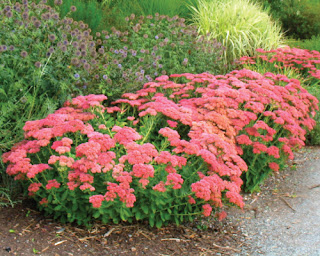When I recently helped a friend to improve her large garden I could not find a single earthworm. As I dug into the soil, it looked depleted, compacted, and extremely dry.
Success in the garden starts with the soil. As much as—and sometimes more than—moisture and sunlight, determines whether plants thrive or die. Your soil needs to be able to provide nutrients to plants and allow plants to take up the nutrients in the soil. Otherwise, your plants just won’t grow well. Here are a few quick and easy ways to test your soil:
This should take about 1 hour to set up and a full day to conclude. Find an empty straight-sided jar, such as peanut butter or mason jar, with a lid, and have a ruler handy. Dig down to root level—about 6 inches—in the area that you want to test and remove enough soil to fill the jar to between one-third and one-half full. Next, fill the jar to the shoulder with water, then set the jar aside to let the soil soak up the water. Put the lid on the jar and shake it hard for about 3 minutes.
- Set the jar down and look at your watch. In 1 minute, measure (with the ruler) the amount of sediment that has collected at the bottom. This is the sand in your soil.
- Wait 4 minutes more. Measure the sediment again: The difference between the two numbers will be the amount of silt in your soil.
- Take the third measurement in 24 hours. The difference between the second and third numbers will be the amount of clay in your soil.
Calculate the percentages of sand, silt, and clay, which should add up to 100 percent. Healthy soil typically consists of 20 percent clay, 40 percent silt, and 40 percent sand.
This simple test can help you to decide what to grow: If your soil is high in sand, it will be well-draining. Silt and clay are hard to get wet, but they stay wet; plants that like “wet feet” would be happy here. Choose your plants accordingly and/or amend the soil:
- If you have sandy soil, add humus or aged manure, peat moss, or sawdust with some extra nitrogen. Heavy, clay-rich soil can also be added to improve the soil.
- If you have silty soil, add coarse sand (not beach sand) or gravel and compost, or well-rotted horse manure mixed with fresh straw.
- If you have clay soil, add coarse sand (not beach sand) and compost
The pantry ph-test for soil acidity or alkalinity
- Place 2 tablespoons of soil in a bowl and add ½ cup vinegar. If the mixture fizzes, you have alkaline soil.
- Place 2 tablespoons of soil in a bowl and moisten it with distilled water. Add ½ cup baking soda. If the mixture fizzes, you have acidic soil.
- If it does not react to either test, the soil has a neutral pH.
- A very high or very low soil pH may result in plant nutrient deficiency or toxicity.
- A pH value of 7 is neutral; microbial activity is greatest and plant roots absorb/access nutrients best when the pH is in the 5.5 to 7 range.
Once you figure out your soil pH, you can change or adjust it. Acidic (sour) soil is counteracted by applying finely ground limestone, and alkaline (sweet) soil is treated with ground sulfur.
Every plant prefers a different level of acidity. Use this soil pH chart to find which pH level is best for your garden plants. Then, learn how to adjust it accordingly!
The earthworm test:
The best time to check for earthworms is in the spring when the soil’s temperature has reached 50°F and its surface is moist. Use a shovel to dig up about 1 cubic foot of soil. Put the soil on a piece of cardboard, break it apart, and look for earthworms.
If your soil is healthy, you will find at least 10 earthworms per cubic foot!
If your soil has fewer than 10 worms, add more organic matter—compost, aged manure, leaf mold. Organic matter improves structure, slowly releases nutrients, and increases beneficial microbial activity.
Always know when your soil's moist is ideal for planting, with the Stainless Steel Soil pH Meter by Smart Choice. We've tested our stainless steel garden soil ph Meter against a digital soil pH meter, ours is more accurate, easier to read, and more durable!
- 5'' stainless steel stem
- 1.5” glass-covered display
- Sturdy, easy to read, more precise than digital pH meter
Perfect for reading soil moisture and light amount meter, outdoor or indoor garden use, and much more. Used by professional gardeners and groundskeepers to manage ideal planting and composting.
Use Natural Fertilizers:
Instead of using synthetic chemical fertilizers to feed your plants, consider relying on natural fertilizers to nourish both your plants and your soil. Compost, manures, bone meal, blood meal, fish meal, rock phosphate, alfalfa meal, and kelp are great natural fertilizers.
Fertilizers based on natural ingredients not only provide mineral nutrition for growing plants, they also feed the soil’s living organisms. These organisms (most of which are microscopic fungi and bacteria) process these natural fertilizers, breaking them down into the nutrients that plants use to grow.
.
<><><><><>
.







